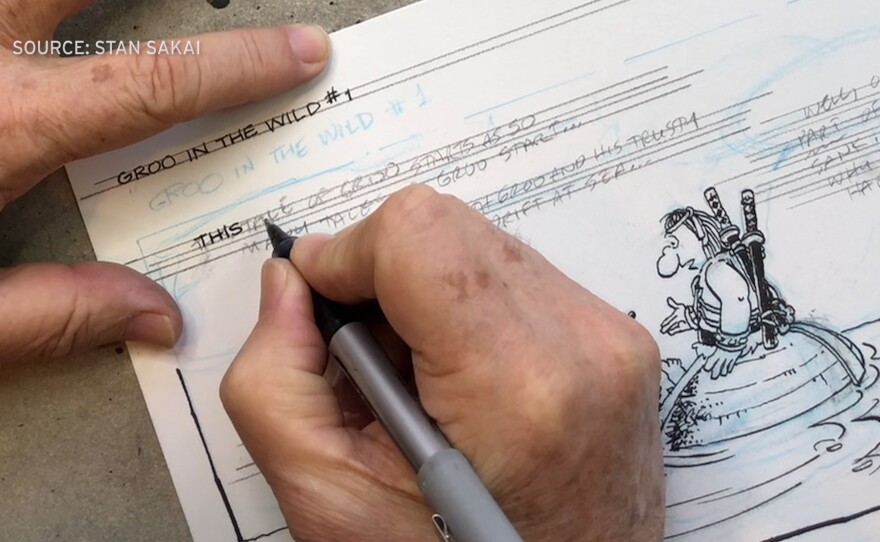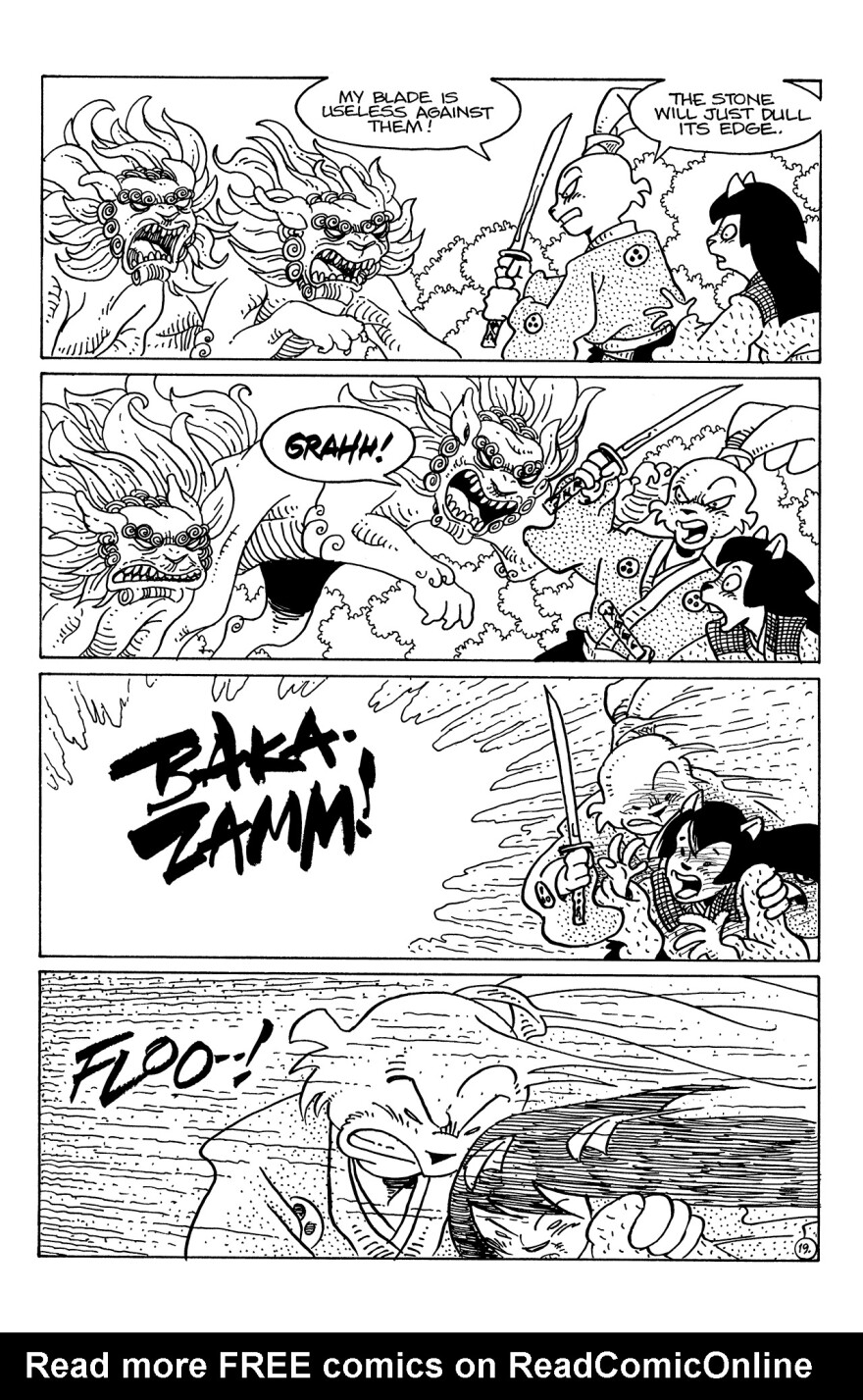Eisner award-winning letterer Stan Sakai talks about his art for Letterer Appreciation Day.
Comic book lettering, like film editing, can be an invisible art that goes unnoticed and unappreciated. But a good letterer enhances a comic and one of the best is Stan Sakai. But he got into the profession by accident.
"Sergio Aragones heard that I was teaching calligraphy and said, ‘I'm just starting a comic book. Would you like to be the letterer?’ And I said, 'Yeah, I know how to do a letter.' I figured, How hard can it be? I never lettered a comic book in my life," Sakai recalled.
So he did some research and began lettering “Groo,” created by Aragones. During the interview he held up a partially inked page from Aragones that he was working on.

"This is a page from Sergio Aragones’ 'Groo, the Wanderer," Sakai explained. "You can see he's already done some of the inking of the artwork. Letterers usually get the artwork in the pencil stage and then put the lettering in, and then the word balloons, borders, and then the inker basically draws around the word balloons. So sometimes I work on pages where (Aragones) just leaves room for the lettering for me."
Because Sakai and Aragones have a fluid collaborative process and have been working together for decades. Below is an example of Sakai penciling in the letters for a panel of "Groo."

Sakai explained "Once the copy is roughly lettered in, I make the guidelines for the lettering. This is what I use to make the guidelines — this is called the Ames Lettering Guide, and that gives me a guide on how big to make the lettering so that each line is very consistent. By roughing up the lettering, I can gage how long each line should be and then I can add the balloons."


Sakai, a third generation Japanese-American, also created his own comic “Usagi Yojimbo,” set in feudal Japan.
"This is a time of turmoil in Japan," Sakai said. "The samurai class, which was the reigning power before, has now become not obsolete, but pretty much so, because now there's peace in the land, so there aren't much call for warriors. So there is a rise of the merchant class and a lot of turmoil going on in Japanese society. And Usagi is a samurai rabbit living in an anthropomorphic world. So all the characters are animals. And even though it's a fantasy series, I tried to pay homage to the Japanese culture."
So he has done stories that involve seaweed farming, pottery making, Japanese festivals and even umeboshi or Japanese pickled plums.

Sakai is one of the few people who still hand letters.
"I do everything the old-fashioned way," Sakai added. "I love the craft of creating comics. I do the writing, I do the penciling, and I do the inking, lettering, physically on paper rather than on the computer. This is something I really enjoy. I love the feel of the Bristol board, and it connects me to the artwork, and it brings more of my personality into the art. Most of my sound effects for Usagi is done with a brush to denote the Japanese style of brush calligraphy."

"We have different sound effects, onomatopoeia, where sounds become words," Sakai added. "We tried to create lettering that would reflect that. If something crashes, you might have little crackly words. It'll be more where you're trying to reflect the words themselves or the sounds themselves."
Sakai was not aware that there was such a thing as Letterer Appreciation Day, so he expressed his appreciation for fellow letterers.
"Todd Klein, his lettering is wonderful," Sakai enthused. "Whenever he's up for an award, he usually gets it. But I think he's a preeminent letterer today. There's also others, especially cartoonists who have their own intellectual property, Jeff Smith of 'Bone,' his work on that is great. Another letterer, Walt Kelly, who did the 'Pogo' newspaper strips. His lettering is fantastic. He does different styles of lettering for different characters."
Celebrate Letterer Appreciation Day this Sunday by taking time to not just read a comic but also to recognize the art of lettering. And next time you are at Comic-Con, look for Sakai and express your appreciation to a true artist and craftsperson.





